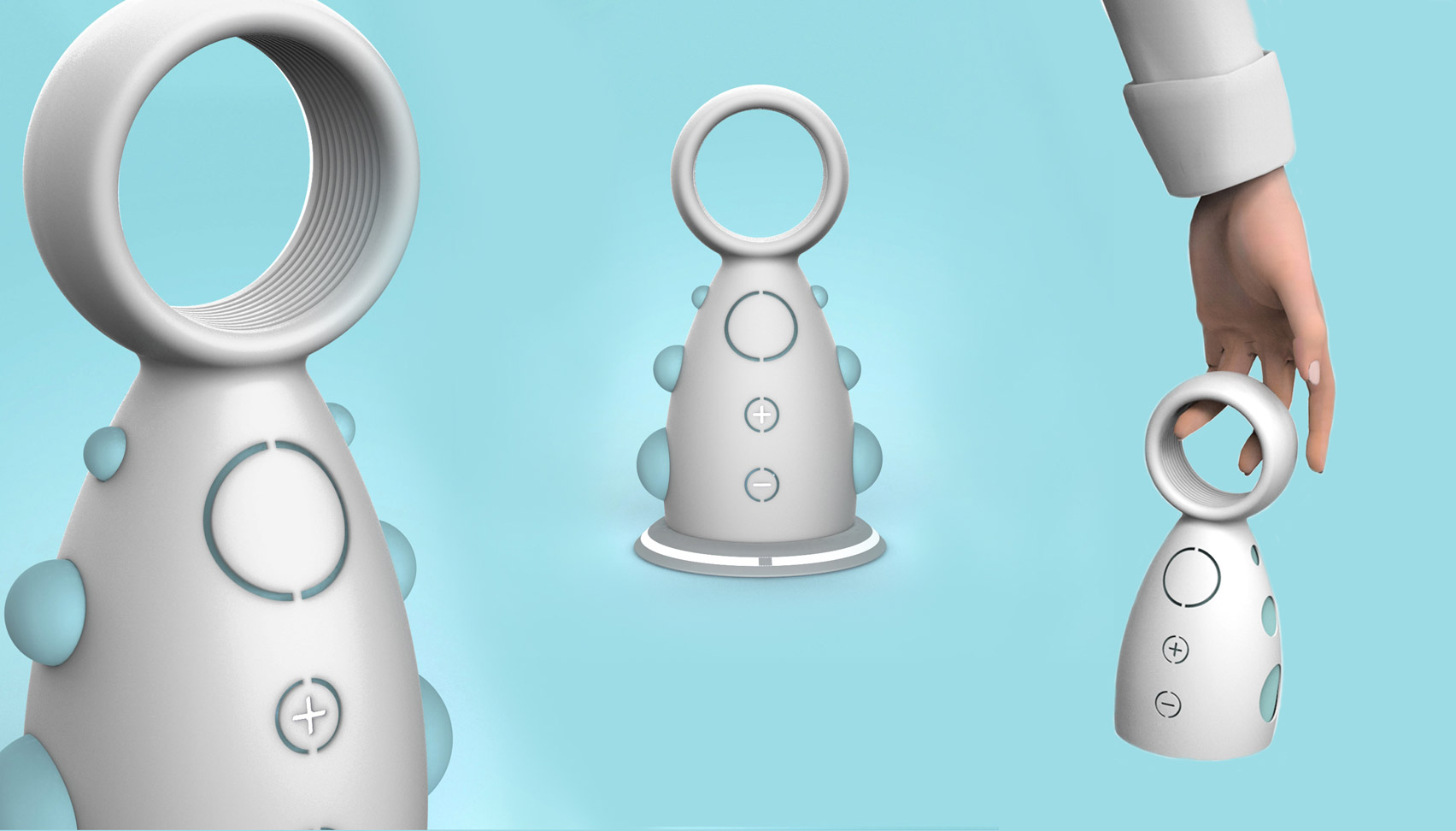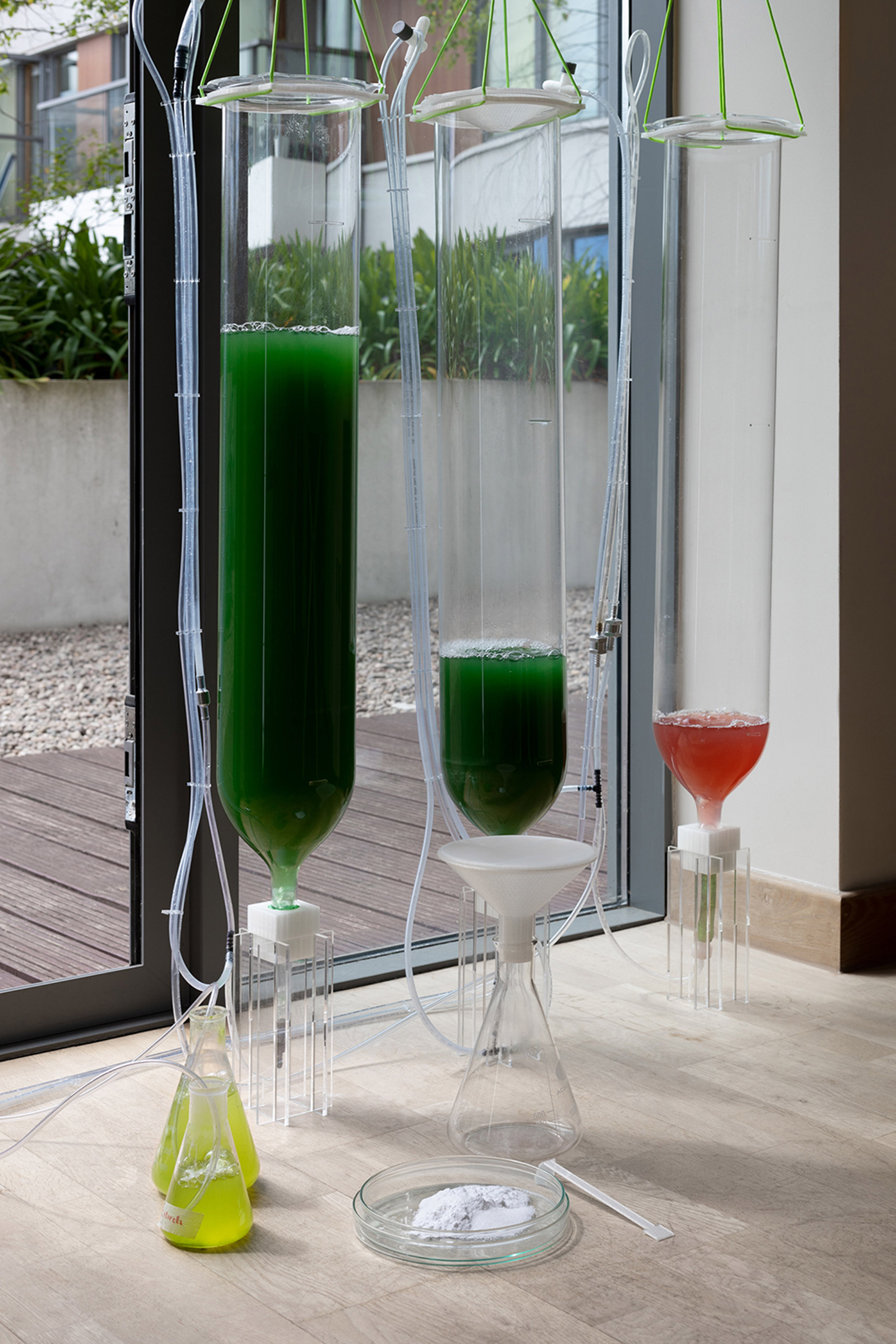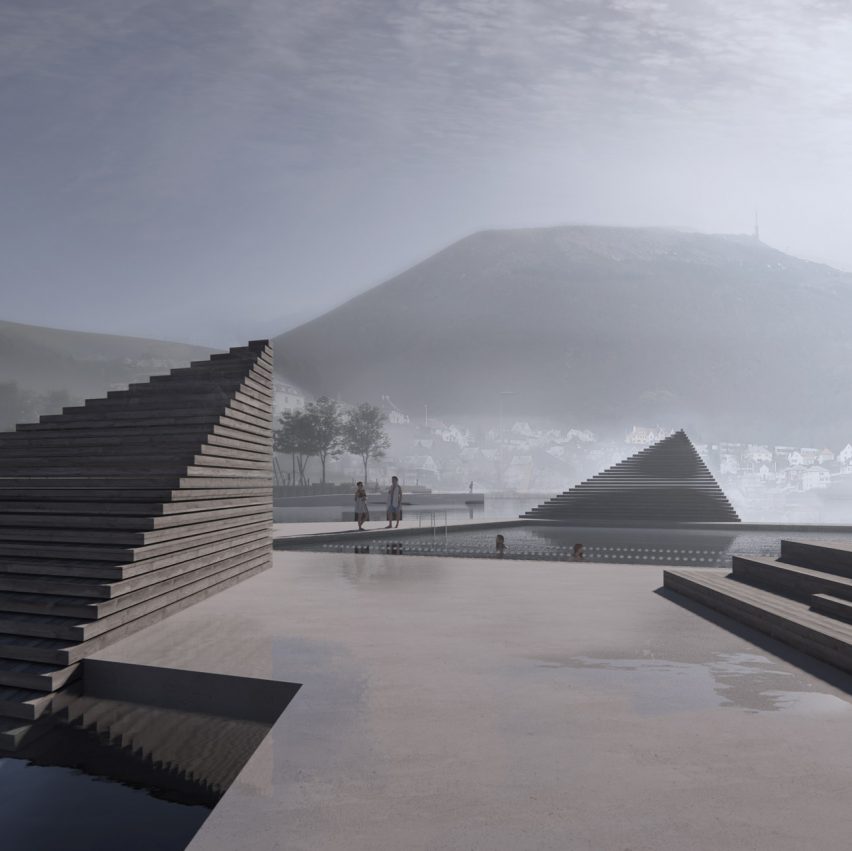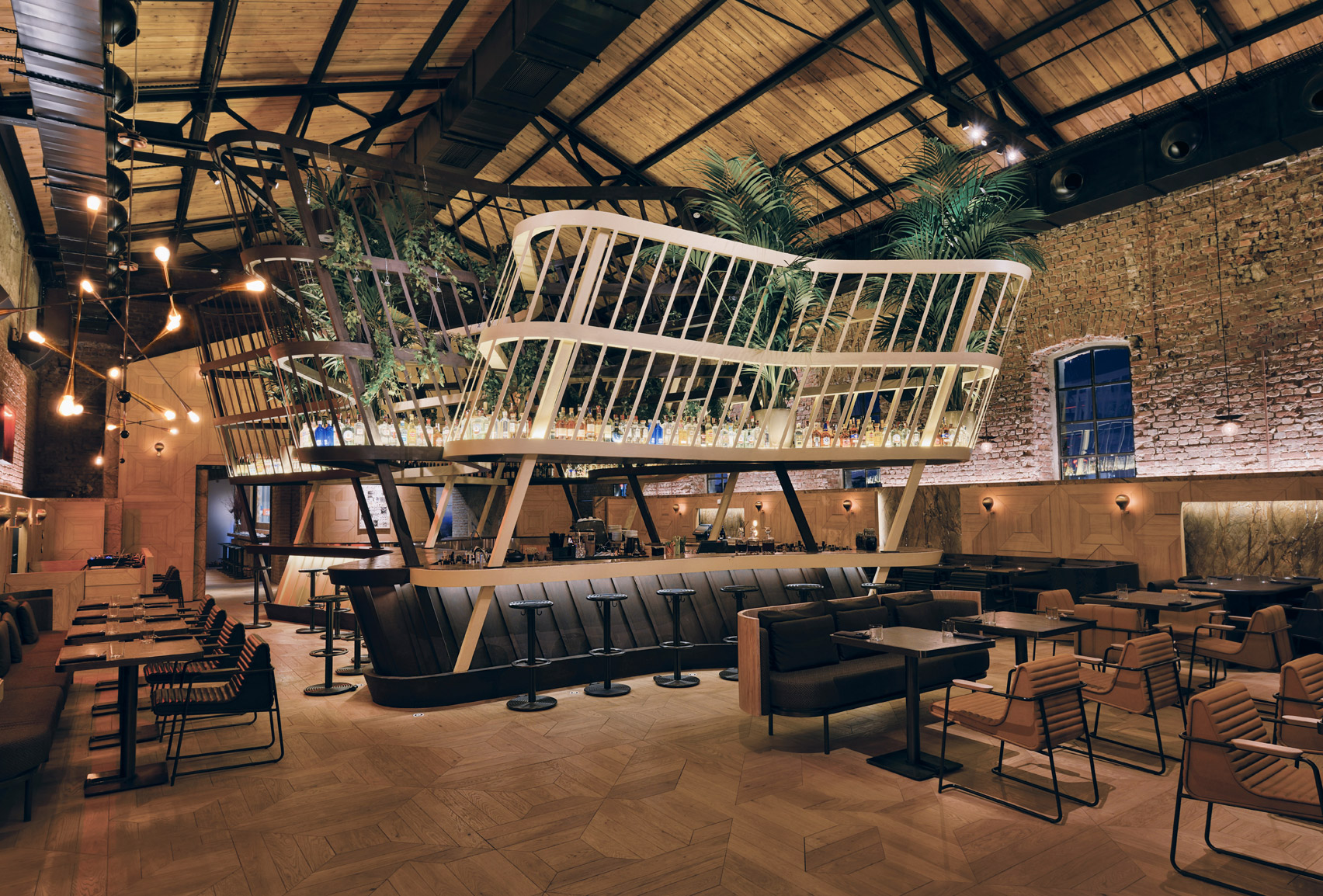
A toy for hospitalised children and an experimental clothing collection are among the varied student projects in this VDF school show, curated by the Design Innovation Centre of Vilnius Academy of Arts.
A total of 14 students are featured in the exhibition, chosen by the Lithuanian university's Design Innovation Centre from the participants of this year's Young Designer Prize – its annual competition that was established to aid the professional development of young designers.
The projects span fashion design to products and were all completed by pupils enrolled at the Vilnius Academy of Arts on its BA courses in Product Design, Communication Design, Fashion Design or the MA Design Research and Theory programme.
Design Innovation Centre of Vilnius Academy of Arts
School: Design Innovation Centre of Vilnius Academy of Arts
Courses: BA Product Design, BA Communication Design, BA Fashion Design and MA Design Research and Theory
Tutors: Aušra Lisauskienė, Robertas Jucaitis, Šarūnas Šlektavičius, Rūta Mickienė, Dovilė Gudačiauskaitė, Vytautas Kibildis, Miglė Kibildienė, Rasa Janulevičiūtė, Dainius Bendikas, Audrius Klimas, Jolanta Vazalinskienė, Juozas Brundza, Renatas Šukys, Eglė Ganda Bogdanienė, Rūta Būtėnaitė, Marius Žalneravičius, Renata Maldutienė, Jolanta Talaikytė, Mantas Lesauskas, Laima Mikalauskienė, Laima Kėrienė, Vytas Palavinskas, Donaldas Andziulis, Mindaugas Šimkevičius and Virginija Degenienė.
Design Innovation Centre statement:
"Design Innovation Centre of Vilnius Academy of Arts (VAA) is a centre of excellence established in 2007. The division provides commercialisation, development and renewal of new products, incubation activities and also promotes design in society.
"Since 2016, Design Innovation Centre is responsible for the intellectual property created in the academy. In 2018, divisions were opened in VAA faculties in Kaunas, Klaipėda and Telšiai. In 2019, The State Patent Bureau of the Republic of Lithuania granted VAA Design Innovation Centre the status of a PATLIB centre."
Young Designer Prize statement:
"Young Designer Prize is an annual competition organised in Lithuania since 2011 with 60-70 young designers competing for the awards every year. This year, 14 students were selected for the exhibition Young Designer Prize from four categories: product design, communication design, fashion design and design research and theory.
"The main aim of this competition is to encourage the professional development of design students, providing them with an opportunity to present ideas outside the Academy."
The Forgotten Woods by Elena Motiejūnaitė
"Nowadays commerce influences not only people's lifestyle and leisure, but also children's education. The commercialism of fairytales has also become a common phenomenon, which not only influences the survival of the fairytale tradition but also transforms the meaning and effect of fairytales.
"Child psychologist Bruno Bettelheim who noticed this tendency back in 1975 wrote that 'The dominant culture wishes to pretend, particularly where children are concerned, that the dark side of man does not exist, and professes a belief in an optimistic meliorism'. Today it has become even more obvious: in children stories, the biggest challenges are mostly casual everyday problems.
"This project is a virtual reality installation that demonstrates a positive side of the most common villain characters of Lithuanian folk tales. While the existence of negative characters in ancient folk tales has a purpose of highlighting the dark side of the human nature, traditional, archetypal characters of cultural heritage play a huge role in children's mental growth. In this installation spectators become witnesses of a child's inner monologues dedicated to three antagonists: the Witch, the Devil, and the Dragon."
Name: Elena Motiejūnaitė
Project: The Forgotten Woods
Course: Communication design
Website: behance.net/EliM
Contact address: elospastas@gmail.com

Transformative Identity of the Creator by Austėja Dzikaraitė
"Eccentrics, outcasts, and freaks living in their own world or, on the other hand, exceptional people with extraordinary talents? Society's attitudes toward creativity and creative people raise questions such as: what does it mean to be a creator and when do you become one? Where does creativity begin and how does it intertwine with everyday life?
"This conceptual project examines the development of the creator's personality from early childhood in search of answers about the origins of creativity. The project consists of a polyptych four-part book and a digital experience-sharing platform. Symbolic images and texts invite viewers to explore and identify with the creator's human transformation."
Name: Austėja Dzikaraitė
Project: Transformative Identity
Course: Communication design
Website: behance.net/austedd5111
Contact address: auste.d.d@gmail.com

If Only I Could by Eglė Kirlytė
"Many have probably heard the phrase 'if only I could, I would lie in the bed all day and do nothing'. We often wish to distance ourselves from irritants and dream about experiencing long term state of happiness. But does eternal happiness really exist? Maybe it's just an illusion?
"The personal project If Only I Could is based on personal experiences and tries to destroy illusions of long-term happiness. After all, without darkness there would be no light."
Name: If only I could
Project: Eglė Kirlytė
Course: Communication design
Website: jeitikgalėčiau.lt
Contact address: e.kirlyte@gmail.com

Neuru – Artificial Identity by Ada Rotomskytė
"Currently, the topic of Human Enhancement and its prospective applications raise a lot of discussions. With the rapid growth of neurotechnologies, the need for development and adaptation of clear ethical regulations is becoming ever more urgent.
"Neuru – Artificial Identity is a speculative design project that envisions the future where Brain-Computer Interface has become a widely accessible tool in the human society. This project simulates a virtual human enhancement platform that allows a person to make adjustments to their brain as required.
"The project aims at evoking curiosity and encouraging people to broaden their knowledge on this topic and to join the on-going debate on Human Enhancement."
Name: Ada Rotomskytė
Project: Neuru – Artificial Identity
Course: Communication design
Website: behance.net/adarotomskyte
Contact address: ada.rotomskyte@stud.vda.lt

Imprint No.1 by Liepa Aliukaitė
"This experimental, artistic collection explores the relationship between dynamic nature and the artist's inherent creative process, which begins with exploration and then goes on to become a finite object.
"Reflecting on sentimental recollections and experiences of home and wildlife, the collection is based on a living creative process that enables us to perceive ourselves as the creator. The search for new artistic expressions questioning the limits of possibilities created by man for himself reveals unexplored creative fields.
"By combining the experiences of hiking through woods with the search for own identity, the main imagery of the collection is born: man and the unique fingerprint that each of us possesses, a tree and the pattern of its rings, as well as the tracks left by us while journeying through our daily rituals. The collection develops naturally based on the principle of 'walking a path', thus telling us about a continuous creative journey."
Name: Liepa Aliukaitė
Project: Imprint No.1
Course: Fashion design
Website: instagram.com/nuluzusliepa
Contact address: liepa.aliukaite@gmail.com

Reloaded Stones by Ieva Laskevičiūtė
"Reloaded Stones jewellery collection analyses the relationship between carbonate-class minerals calcite, aragonite, and dolomite and hen eggshells. The chemical composition of these minerals almost perfectly matches that of eggshells found in most households environments.
"The eggshell is composed almost entirely of calcium and magnesium carbonates, and the chemical composition of the selected carbonate-class minerals (Ca(CO3), Ca(CO3), CaMg(CO3)2) class is dominated by this particular inorganic salt.
"Jewelry is made with these new eco-friendly and aesthetically pleasing stones that promote zero-waste policy and thus become a substitute for precious stones in jewellery and design."
Name: Ieva Laskevičiūtė
Project: Reloaded Stones
Course: Fashion design
Website: instagram.com/l__ieva
Contact address: ibadae@gmail.com

After sin by Gintarė Janulaitytė
"The subject of sin is interesting and relevant for a contemporary creator, the possible reason for this being the fact that humans cannot avoid sin, just as sin cannot exist without humans. This stimulates interest in how modern man understands sin, what kind of feelings it provokes, and how this subject is developed in art.
"With this collection, I do not portray sin or its types, but rather choose to convey feelings it invokes. After sin consists of nine brooches: smearing, anger, pain, despair, sadness, anxiety, loneliness, reconciliation, forgiveness. Feelings and emotions mark the body, cling to it and, though uncomfortable, are worn nevertheless."
Name: Gintarė Janulaitytė
Project: After sin
Course: Fashion design
Website: instagram.com/gintare_janulaityte
Contact address: gintareciukas@gmail.com

Timo by Barbora Budinaitė
"Timo is an object designed to help a person plan their work based on the most productive time of the day. It also distinguishes break time during which a person is encouraged to engage in activities that are beneficial to their health.
"The massage side helps a person to calm down, become more invigorated and concentrate more easily on further work. Also, this object can easily be placed on a laptop screen, which especially comes in handy in busy working environments where it is difficult to concentrate, like cafes and public spaces."
Name: Barbora Budinaitė
Project: Timo
Course: Product design
Website: barborabudinaite.wixsite.com/mysite
Contact address: barbora.budinaite@gmail.com

Hospital Friend for Kids, Loo by Viktorija Mankevičiūtė
"Loo is a buddy for children's hospital procedures. It takes care of a child's daily routine and wellbeing, reminds them about procedure appointments as well as the required items, indicates where the required room is, acts as a night light, and, most importantly, helps the child to combat loneliness and takes care of his or her wellbeing.
"In addition, it can call for help if the need arises. It can be operated both with voice and buttons. A minimalist design solution was chosen in order for Loo to be suitable for any child's age."
Name: Viktorija Mankevičiūtė
Project: Hospital Friend for Kids, Loo
Course: Product design
Website: behance.net/mankeviciuf6f5
Contact address: mankeviciute.viktorija@gmail.com

Familink – Family's Security Network by Vilius Vaura
"Personal and family security is one of the main factors determining quality of life. Despite that, everyday people encounter security problems, such as robberies, attacks, critical health problems, hate crimes, and disappearance of persons. It is sometimes hard or even impossible for some people, including ones with hearing disorders, to call for help.
"These factors and a personal experience encountering armed robbery led to the creation of the Familink system. Familink is a personal and family's security network, that connects the whole family circle and emergency services, helps to record and collect valuable pieces of evidence, surveil pets and personal belongings. Familink is flexible, adaptive to every age group and individual and their needs."
Name: Vilius Vaura
Project: Familink – Family's Security Network
Course: Product design
Website: viliusvaura.wixsite.com/home
Contact address: viliusvaura@gmail.com
Žaltys by Paulina Bradūnaitė
"Žaltys is a music player that operates based on bone conduction. The device can be used by both hearing and hearing-impaired people. Inaudible music frequencies are transmitted to the wearer through vibrations. The whole object is flexible, adaptive, and does not restrict movements.
"The stereotypes make it hard for people with hearing impairments to find employment or to study at universities. This object strikes the stereotype into its most vulnerable place – if people with hearing impairments are able to enjoy music, why shouldn't they be able to do other things?
'The aesthetics of the product are based on Baltic futurism and demonstrates that Lithuanian culture can also exist in the future context."
Name: Paulina Bradūnaitė
Project: Žaltys
Course: Product design
Website: paulinabradunaite.wixsite.com/website
Contact address: paulina.bradunaite@gmail.com

EDi creator by Karolina Petraitytė
"The EDi creator collection consists of five educational tools for developing spatial-visual intelligence, by actively learning languages and mathematics and by developing creative skills.
"The tools are designed to enrich the educational process of fourth- and fifth-grade pupils. They help pupils to create spatial text structures, understand the interrelationships of geometric shapes, memorise the multiplication table, develop economic literacy, and learn the basics of spatial drawing.
"All tools are designed to be open to use and easily adaptable to different lesson activities. EDi creator brand is reflected in the whole collection through the same range of colours and stylistic elements."
Name: Karolina Petraitytė
Project: EDi creator
Course: Design research and theory
Website: www.kpdesign.lt
Contact address: petraityte.k@gmail.com

MUTED – Artistic Space Concept by Greta Ūbaitė
"MUTED – Multifunctional Upcycled Technology Expansion in Design – is the concept of artistic space related to the multifunctional development of upcycling technologies in design, costume and interior.
"By using upcycling as a creative method, objects with a multifunctional purpose are created that interact not only with the human body but are also incorporated in the surrounding space. In this way, even when not worn, the products are nevertheless used and made meaningful through their additional function.
"The idea of the creative project was suggested by the analysis of the cases of upcycling applicability examined in the theoretical work and the implementation of personal creative experiments. For the implementation of the creative project, a pretty non-standard material was chosen – nylon tights that became defective during the production phase and thus were no longer suitable for sale."
Name: Greta Ūbaitė
Project: MUTED – Artistic Space Concept
Course: Design research and theory
Website: instagram.com/muted.lt
Contact address: hgretosmail@gmail.com

Oli by Justinas Dadonas
"Open design is no longer merely a theoretical possibility, but an actual tool to empower users and enable new forms of distributed design and production. The ever-expanding maker movement, easy access to information and digital manufacturing tools demand new forms of design. Therefore, design discipline and the new maker movement can empower each other to become much greater factors of present social and economic changes.
"My research lead to the creation of Oli. It is a system of modular printed parts, that uses the principles of open and distributed design. These parts can not only be a tool for active environment creation, but also a way of bringing greater sense to individual agency."
Name: Justinas Dadonas
Project: Oli
Course: Design research and theory
Website: instagram.com/panama_workshop/
Contact address: jdadonas@gmail.com
Virtual Design Festival's student and schools initiative offers a simple and affordable platform for student and graduate groups to present their work during the coronavirus pandemic. Click here for more details.
The post 14 fashion and design projects by Vilnius Academy of Arts students appeared first on Dezeen.
from Dezeen https://ift.tt/3go5cJD



























